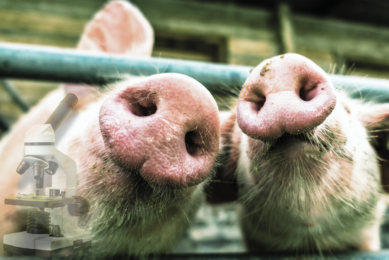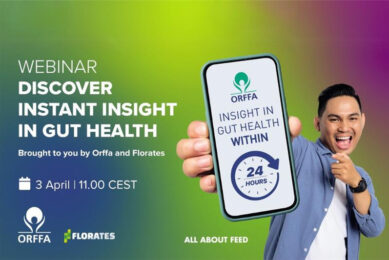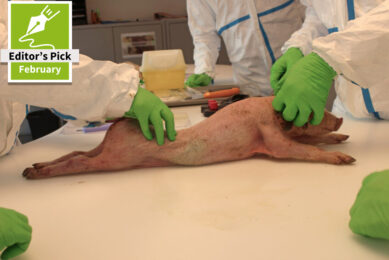Optimising livestock health and microbiome with additives
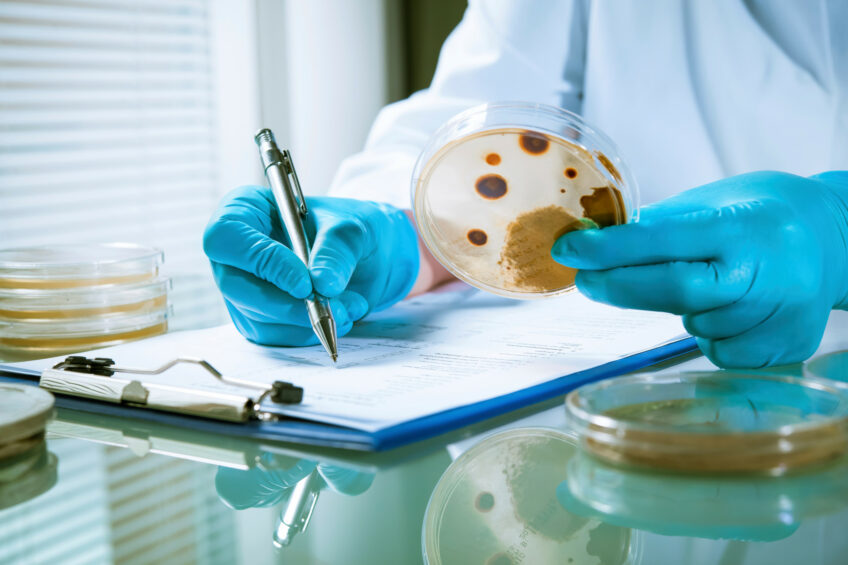
When selecting feed additives to improve animal health, there are 2 basic approaches that can be taken. The first approach is to address an acute challenge. These are known challenges that affect animal health and performance and may even result in increased mortality. These challenges could involve issues with a particular pathogenic organism, post-harvest safety concerns, or concerns about feed quality. The second approach is more holistic, aiming to enhance the overall health of the animal through mechanisms such as immune or microbiome modulation, leading to better performance.
WORLD OF MICROBES SPECIAL 2024 – read all articles
The primary mode of action when selecting a feed additive for an acute challenge is pathogen reduction. One possible way to reduce the pathogen challenge on animal faces is through competitive exclusion. This is where a feed additive is administered to increase a commensal bacterial population that utilises the same niche as the pathogen, thereby forcing the pathogen out of the environment. Pre-, post-, and especially probiotic feed additives are an ideal solution as they can increase disease resistance, improve the microbiome, and immune development leading to increased performance in a more sustainable manner than traditional antibiotic growth promoters.
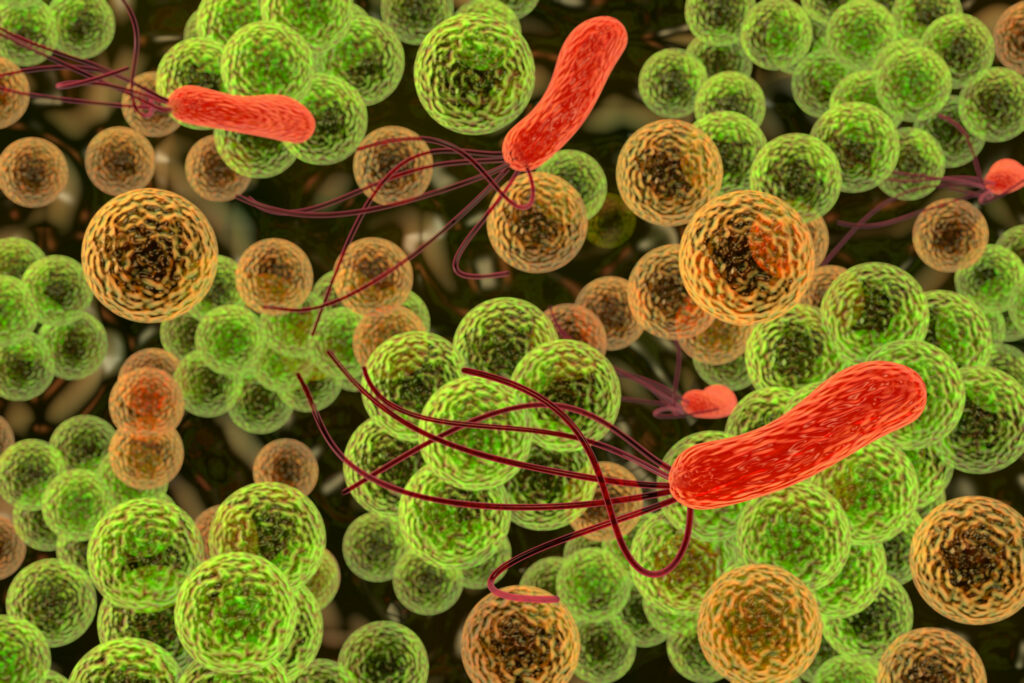
Probiotics
Probiotics have been shown to improve microbial succession in developing animals, especially in chicks and calves that are removed from the maternal environment. This improved succession leads to earlier maturation of the microbiota, excluding pathogens and improving performance. Another way that a feed additive may reduce the challenge of pathogenic organisms is through direct inhibition of the pathogen. Many bacterial strains directly inhibit pathogens by producing lipopeptides, polyketides, and post-translational modified peptides, often referred to as bacteriocins. Probiotics can be chosen based on their ability to inhibit specific pathogenic organisms such as Escherichia coli, Clostridium perfringens, Coliforms, Klebsiella, Streptococcus suis, Enterococcus faecalis, and Enterococcus cecorum. The inhibition of these pathogens reduces the incidence of diseases such as colibacillosis and necrotic enteritis in broilers, or haemorrhagic bowel syndrome and mastitis in dairy cattle. Lastly, pathogens can be reduced by including a feed additive, such as yeast cell wall components, which bind to pathogens like E. coli and Salmonella so that they pass through the digestive tract and are unable to colonise the animal.
A holistic approach to long-term health
When selecting a feed additive for improved animal health using a more holistic approach, some additives can interact with the host in a way that can modulate immune function and help protect the animal from disease. It has been shown that certain feed additives can upregulate the expression of intestinal tight junction proteins JAM2, ZO1, and occludin. This improvement in the epithelial barrier reduces leaky gut, preventing septicemia and diseases such as liver damage in ruminants or kinky back in broilers. Feed additives can also modulate the microbiome, leading to improved performance. Certillus, a Bacillus-based feed additive, has been shown to reduce the levels and diversity of Clostridium in dairy cows, leading to fewer digestive deaths. When examining the fibre-degrading constituents of the microbiome, it was determined that proportions of Ruminococcus albus and Fibrobacter succinogenes type I were both increased, helping to improve nutrient utilisation and leading to increased milk fat percentage. Celmanax, a multicomponent feed supplement containing refined functional carbohydrates, has been shown to both improve immune function and optimise the intestinal microbiota of broilers. In one study, the villus surface area, a measurement used to determine the ability of an animal to absorb nutrients, was increased in both the jejunum and ileum of broilers. At the same time, the intestinal levels of E. coli and Salmonella were reduced, while levels of Lactobacillus were increased. This combination of improved nutrient utilisation and optimised microbiome led to an improvement in average daily gain and an increase in avian influenza antibodies after vaccination.
Supplementation strategy matters
It is important to not only consider the composition of a feed additive but also evaluate how it is administered to the animal. This includes the route of administration, the age at which a feed additive is supplemented, and the dose at which it is administered. In broilers, E. coli is the predominant challenge early in life and shifts to Clostridium around 21 days of age. In dairy cattle, challenges may be more related to times of stress, such as during transition or summer heat. Feed additives can be selected to target these specific challenges during these times. Ensuring the correct dosage of additives is crucial, as research with piglets demonstrated that administering a feed additive at ten times the recommended dose did not enhance performance, whereas using the suggested inclusion rate did.
A promising strategy for using feed additives in livestock production, especially when benchmarked against the effectiveness of antibiotic growth promoters, is to leverage combinations of the types of feed additives described above. Many diseases are multifactorial, requiring either a combination of pathogenic organisms or an environmental stressor and the challenge of a pathogenic organism. Using a feed additive that optimises the microbiome can help to reduce the risk of future challenges. A feed additive that increases the barrier function of the intestinal epithelium can help to reduce the risk of challenges becoming more severe diseases. If there are specific challenges that a producer is facing, then a direct inhibitor of that pathogenic organism can be used to reduce the risk of that acute challenge. A multifaceted approach that incorporates feed additives to enhance the gut microbiome, strengthen the intestinal barrier, and target specific pathogens will make livestock more resilient and better equipped to overcome production challenges. By addressing both the health of the animal from a holistic approach and the acute challenges faced on the farm at a given time, it is possible for feed additives to increase animal performance and protect the farmer’s investment.
© 2024 Church & Dwight Co., Inc. ARM & HAMMER, Celmanax, Certillus and their logos and RFC and Refined Functional Carbohydrates are trademarks of Church & Dwight Co., Inc




